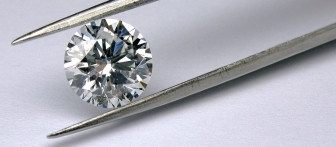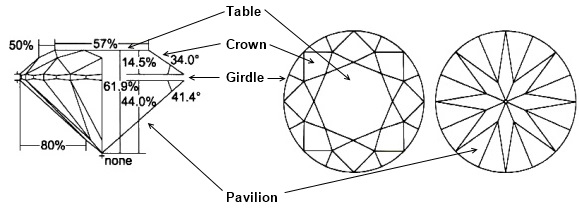
A brilliant product of nature
The round cut, also called “brilliant cut”
The round cut that we all know today, and that makes the richness and the fire of the gemstone, is not a result of mere chance. Over the last centuries, scientists and master cutters have joined their forces to conceive a cut that would produce diamonds whose beauty would only be matched by the light emanating from them.
It is during the 19th century that the proportions of the brilliant cut - the most acclaimed diamond cut - were defined. Those proportions were further refined during the 80s. The angles of the crown (upper part of the brilliant) and of the pavilion (lower part of the diamond) were accurately determined for the brilliant to act as a perfect mirror, designed to reflect the most intense and beautiful beam of light through the table (the largest facet of the brilliant, situated on top). Typically, the brilliant features 57 facets: 33 crown facets and 24 pavilion facets.

Etymology and myths
Derived from the Ancient Greek word adamas, diamond literally means inflexible and untamable. It is for this reason that it symbolizes the indestructible power and everlasting love.
India has a rich history of myths and legends related to diamonds. As the De Beers narrates: “they were worn in battle as a symbol of courage and virtue, to imbue the wearer with magical strength and also, more practically, to deflect weapon blows. A sixth-century A.D. Indian text, the Ratnapariksha, describes the protective powers of the diamond in detail, saying that the presence of a diamond means that dangers will recede.” (full source)


